Intoduction
Relatively narrow and deep vertical caverns, which developed in the epikarst and vadose zones of karst plateaus with no known accessible connection to active horizontal caves, are considered here to be plateau karst shafts. Until now, the origin of such caverns has not been well understood and has been the subject of conflicting opinions (Baron, 1998, 2001, 2002; Baron and Fiala, 1999; Hradecky et al., 1974; Kosa, 1971; Lesinsky , 1998; Lysenko et al., 1974; Muller and Sarvary, 1971; Skrivanek, 1958, 1965).
This paper attempts to explain the more important factors of their speleogenesis and outlines the main stages of shaft evolution, adding the author's observations to older information. This research took place at the Dolny Vrch Plateau, in the Slovak Karst Protected Area in southeastern Slovakia (Fig.l), as part of a systematic 35-year speleological study of the plateau by Czech and Slovak cavers and karstologists.
Geological and geomorphic setting
The Dolny Vrch Plateau is about 17km long and 1 to 7km wide, elongated from east to west. It is crossed by the east-west border between Slovakia and Hungary (the Slovak part is only 2km wide). In Hungary it is called the Also Hegyi Plateau. The plateau surface slopes southward from an altitude of 611m asl (the Pavlovsky Vrch Hill) to 500m asl at the southern edge.

Fig. 1. Location of the Dolny Vrch Plateau within the Slovak Republic.
The plateau surface extends up to 400m above the local fluvial base level (the bottom of the Turnianska Basin). The surface of the plateau is slightly irregular with isolated hills and dissolution dolines with diameters of typically 50 to 150m and ranging up to 300m. The Slovak part of the plateau consists of very pure lagoonal Wetterstein Limestone, 800-1200m thick, grading southward into bodies of Riff Wetterstein Limestone, both of Triassic (Ladinian-Cordevolian) age (Mello et al., 1996, 1997). The large Vcelare Quarry is located at the eastern edge of the plateau.
Hydrogeological setting
There is a probable karst water table at the level of the plateau base, approximately at base level at the altitude of about 230m asl, where most of the karst springs are located. There are 11 karst springs at the base of the plateau on the Slovak side. The pH of the spring water ranges between 7.3 and 8.5 (Lysenko et al., 1974). Above this general level is a vadose zone perhaps 350m thick, in which shafts have developed in the upper part.
At present the shafts do not contribute much to the groundwater system, as most of the recharge enters through joint networks below the dolines. The amount of water descending the shafts varies irregularly with depth and does not always reach the maximum intensity at the shaft bottoms. In some shafts much of the water is lost through openings in steps in the shaft walls, so that the lowest accessible parts of the shaft could contain almost no water flow. In general, the pH diminishes with depth to values as low as 5.3 near some shaft bottoms (Lysenko, 1974). An epikarst (Klimchouk, 1995) has developed in the upper part of the bedrock (the subcutaneous zone of Williams, 1983). The epikarst is several metres thick and consists of highly fissured bedrock. Water becomes perched in the epikarst above the rest of the vadose zone because the jointing diminishes downward. The perched water leaks downward only along major tectonic fractures. Shafts form only along these fractures, predominantly below the base of the epikarst (Klimchouk, 1995; Klimchouk et al., 1996).
Shaft characteristics
The Dolny Vrch - Also Hegyi Plateau contains 211 known shafts or shaft-related depressions. The deepest is the Vecsembukki Shaft (-260m) located on the Hungarian side; the Natrhnuta Shaft (-123m) is the deepest on the Slovak side (Vik et al., 2002).
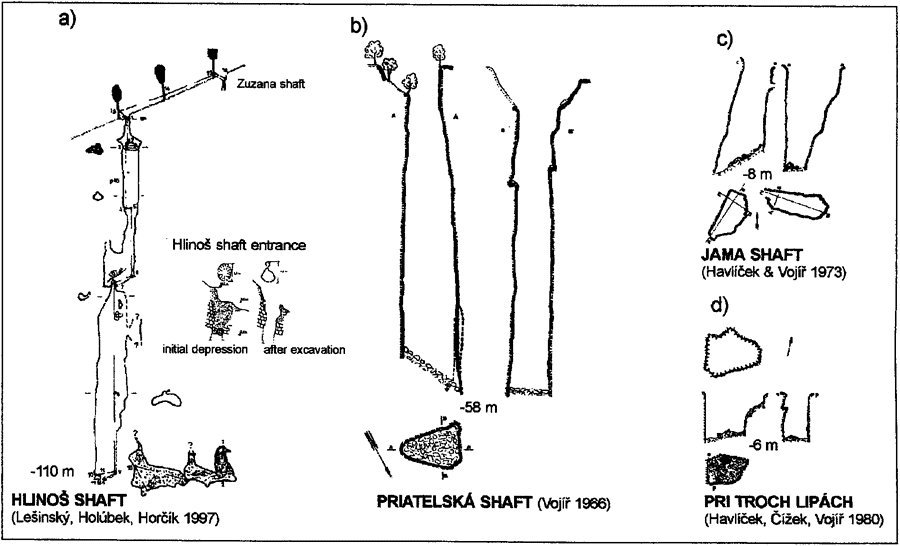
Fig. 2. Speleological maps of some typical shafts at the Dolny Vrch Plateau: a = presently dug out shaft; b, c = old shafts with large entrances; d = relict shaft.
Most of the shafts have similar characteristics. They are relatively narrow and deep, and in general contain vertical steps with profiles resembling right-triangles. The entrances are relatively narrow and their widths are related to the age of the shafts. The first shafts to be discovered generally have wide entrances, but those that have only recently been dug open have very narrow ones (Fig.2). Shaft-related depressions can be divided into two types: incipient depressions and relict shafts. The incipient depressions (Les insky; 1997, 1999) are shallow doline-like depressions several decimetres in diameter in soil material. The soil creeps into young shafts below. In contrast, relict shafts (prepadlisko) are rock-walled depressions several decimetres or metres in diameter, which have filled with debris such as sinter fragments, soil, and recent organic detritus (Fig.2d).
Most of the shaft entrances are located on flat surfaces between large dolines (40%), in the slopes of doline walls (30%), at the foot of the slopes inside dolines (20%), and around doline edges (10%). No shaft entrances were found right in the centres of dolines.
Character of dominant fractures
Dominant tectonic fractures were measured in some shafts. Their dip angles are very important in controlling the shaft shapes. In deep vertical passages - typical pits - all of the main fractures are sub-vertical, dipping 70-90° (Fig.3). Very narrow fissures develop along nearly vertical fractures. Where the dip of the main fracture is less than 45°, the passage is a narrow, sinuous stream canyon. The long axis of the passage cross-section is perpendicular to the fracture direction (e.g. in the middle part of the Kostnica Shaft). Most of the joints observed in the shafts are simple tectonic fractures with no brecciation (tensile joints or slip joints, according to Lysenko et al., 1974). Along the plateau margins they may also have enlarged by gravity sliding (e.g. the Certova Diera Chasm in the Horny Vrch Plateau). For shaft development, simple tectonic fractures seem to be more important than breccia zones, which have a greater effect on doline development and crumbling of debris from shaft walls (Baron, 2001).
Corrosive and erosive forms: the key to determining shaft genesis
Features produced by corrosion and erosion have been studied in a few young and undecorated shafts. For example, small scallop-like forms occur on vertical or overhanging walls in the deeper parts of shafts (Plate 1). They probably were developed by the corrosional and erosional effect of undersaturated water flowing as thin films. In the upper parts of shafts, networks of protruding veins suggest a selective corrosion of the rock by condensation corrosion (Plate 2). Huge wall troughs occur on vertical shaft walls (Plates 3, 4, 5, 6). They are essentially large flutes that terminate downward in bedrock ledges. They are formed by the corrosional and erosional action of dripping water along the walls of sub-vertical fractures. The troughs are tens of centimetres in diameter, tens of metres long, and include a large proportion of the shaft volume. Their bases, as well as the shaft bottoms, are usually covered with debris such as loamy sediment and recent organic detritus (Plate 7). Only active shafts are free of this sediment.
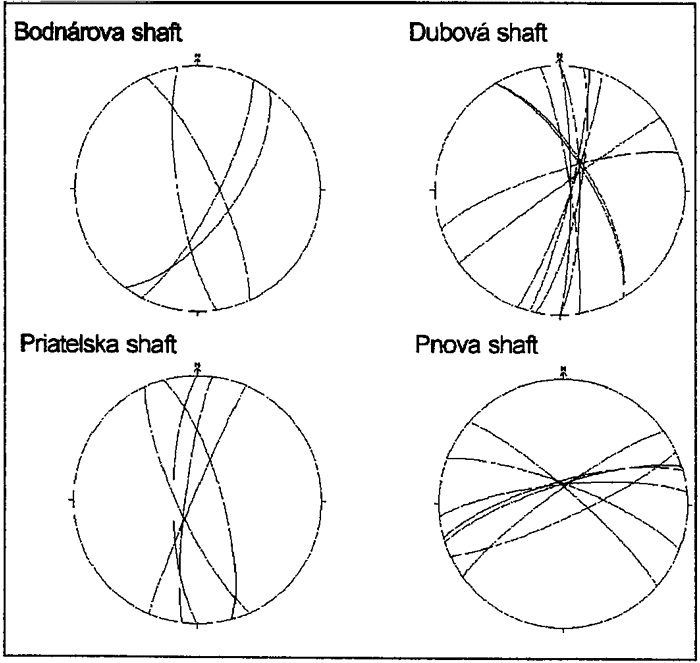
Fig. 3. Arch diagram of the main tectonic ruptures measured in selected shafts at the Dolny Vrch Plateau.

Plate 1. Scallop-like forms have developed most probably due to water-film action (the Hlinos shaft).

Plate 2. Top of the shaft modelled mostly by film water action and condensation corrosion (the Dubova shaft – upward view).
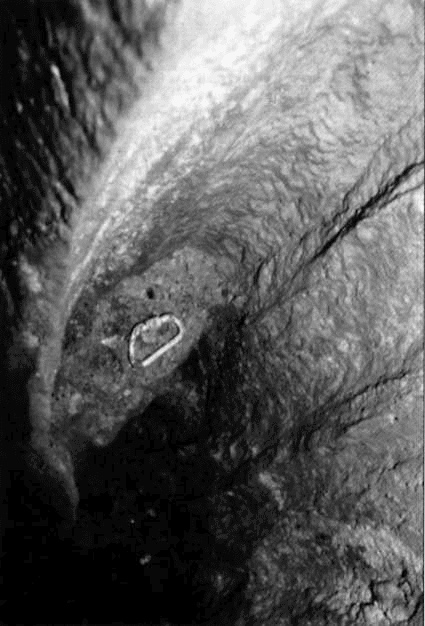
Plate 3. Wall troughs have developed due to drop-water corrosion - erosions effect on sub-vertical rock surface (the Sinecna shaft, downward view).
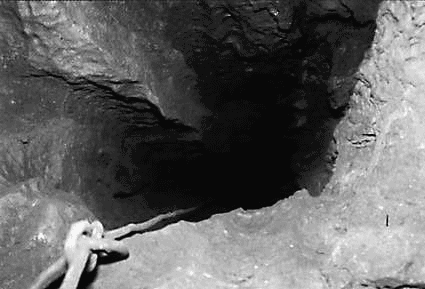
Plate 4. Shaft modelled by drip-water (the Drozdia shaft, downward view).
Morphology of the lower parts of shafts
A profile of the lower part of a shaft was found in the Vcelare Quarry (Plate 8). This preserved remnant is about 8m high and 2m in diameter. Clearly developed wall troughs can be observed, as well as the drainage channels below. These channels form a complex network along sub-vertical joints as the result of corrosion and erosion by water flows or films (depending on the amount of water). Scallop-like forms in the channels give evidence for at least occasional turbulent flow. The channels are several decimetres to several metres wide. They occur not only below the shaft, but also parallel to it. Probably they are precursors of future shafts.
CO2 concentrations: origin and consequences
Carbon dioxide concentrations were measured for 10 years, systematically, in four shafts and occasionally in other shafts. To obtain these measurements, members of the Barrandien caving club were provided with an Airwatch PM1500 electronic CO2 detector with glass-tube indicators (Vik et al., 2002). Carbon dioxide concentrations are greatest near the bottoms of poorly ventilated shafts (Table 1). No consistent maximum value of CO2 accumulation was observed in the shafts. A carbon-isotope analysis was made to determine the origin of the CO2. Carbon dioxide in the shafts comes from present biological processes, probably mostly from the soil (Zak, in Vik and Novotna, 2000). High CO2 concentrations can acidify water and aid in the dissolution of carbonate rocks.
Discussion – model of shaft development
1. Embryonic cave stage (Fig.4)
Precipitation water dispersed in the epikarst is focused along major joints and faults, which act as leakage paths to the vadose zone below. This focused flow widens the fractures mainly at the base of the epikarst (Williams, 1983; Klimchouk, 1995). Closed embryonic caves and drainage channels, both of lenticular cross section, are developed as a result.
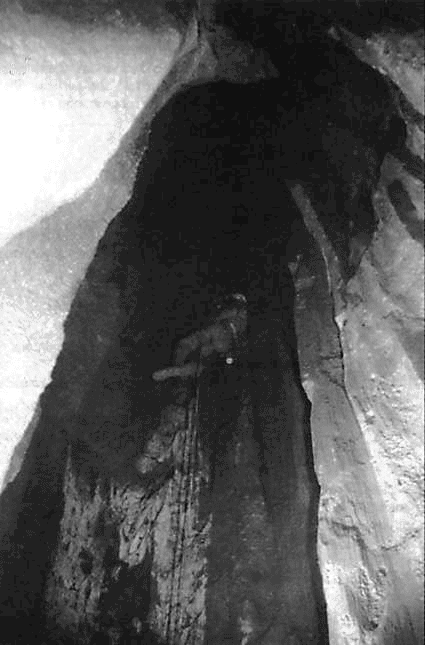
Plate 5. Wall troughs occur on vertical walls of the shafts (the Hlinos shaft, upward view).

Plate 6. Wall troughs are essential parts of the shaft volume (the Drozdia shaft).
They are usually very narrow and have no accessible connection to the surface. Corrosion by thin water films is probably the main speleogenetic agent in widening them (see Frumkin, 1996). Several caverns can occur at different locations along the same fracture, each fed by different water sources, and all showing different stages of development according to the amount of water available.
2. Young-shaft stage (Fig.4b)
Later, shaft enlargement becomes most rapid when trickles and drops of water are able to fall vertically through the high-CO2 atmosphere and achieve great dissolutional capacity. They attack the bedrock intensively. Depressions develop where drips land. As the shafts deepen, these depressions elongate into wall troughs along the upward-sloping walls of sub-vertical fractures (with slopes of 70 to 90°). The rate of shaft enlargement is greatest at this time. The troughs are the dominant parts of the shaft volume and reach lengths of tens of metres and diameters of several decimetres. The resulting shaft profile resembles a series of steps shaped like right-triangles, with the vertical walls formed by dripping water, the diagonal walls formed by the fracture surface. Drainage takes place downward along the fracture, which is still an inaccessible embryonic channel.
Expansion of the shaft width is minimal if the fracture is vertical. This is also the case along sub-horizontal fractures, where ponding of water in depressions inhibits further deepening by dripping water. The drip-water action was also noticed in cave pits by Merrill (1960).
The action of water films and rock-fall add to the drip-water effect, but they have relatively small influence on shaft enlargement. All of the shaft-forming processes are accentuated at intersections between fractures.
3. Stage of shaft opening (Fig.4c)
Shafts develop upward, too, by the action of water films and condensation corrosion. Condensation corrosion is the most intense at the top of the shaft, at the base of the epikarst, especially during the winter (Klimchouk, 1995).
TABLE 1 Variation of carbon dioxide concentrations over time within selected shafts on the Dolny Vrch Plateau.
| Shaft No. | Shaft name | Sample location | Concentration of CO2 (%) on sampling date shown | ||||||||||
| Aug 91 | Aug 92 | Aug 93 | Aug 94 | Aug 95 | July 96 | Aug 97 | July 98 | Aug 99 | Aug 00 | Aug 01 | |||
| 29 | Dubova | bottom of Entrance | 3.50 | 2.80 | 1.70 | 0.50 | 2.50 | 0.95 | 0.40 | 2.45 | 1.20 | 1.10 | 2.50 |
| Entrance and main passaqe junction | 4.00 | 3.20 | 2.40 | 1.80 | 3.00 | 1.30 | 4.00 | 3.15 | 3.36 | 3.50 | 3.20 | ||
| at-50m | 4.20 | 5.00 | 2.80 | 3.20 | 3.60 | 4.00 | 5.00 | 3.48 | 3.99 | 3.85 | 3.50 | ||
| bottom | 5.00 | — | 4.00 | 3.20 | 3.50 | 4.30 | 5.20 | 3.55 | 4.04 | 3.90 | 4.20 | ||
| 6 | Kettos (Dvojita) | bottom of Entrance | 3.00 | 1.80 | 3.00 | 2.60 | 3.00 | 2.25 | 1.60 | 3.20 | 3.16 | 3.20 | — |
| foot of 2nd shaft | 5.00 | 2.80 | 2.30 | 3.00 | 3.00 | 2.00 | 1.80 | 4.00 | 3.64 | 3.42 | — | ||
| at -42m | — | 4.00 | 3.60 | 3.00 | 3.50 | 3.00 | 2.40 | — | 3.56 | 3.58 | — | ||
| bottom | — | — | 2.60 | 3.00 | — | 3.00 | 2.60 | — | 3.71 | 3.68 | — | ||
| 76 | Bodnarova | -5m | 0.40 | 0.20 | — | — | — | 0.50 | 0.40 | — | 0.33 | 1.05 | 0.23 |
| -8m | — | — | 2.00 | 1.25 | 1.20 | — | — | 1.16 | 1.37 | — | 1.17 | ||
| the Floor | 2.50 | 1.00 | 1.80 | 2.00 | 2.00 | 1.30 | 2.00 | 2.01 | 2.01 | 2.20 | 2.17 | ||
| bottom | 3.00 | 1.30 | 1.80 | 2.10 | 2.30 | 1.90 | 1.60 | 2.31 | 2.49 | — | — | ||
| 90 | Geodetov | -5m | 3.00 | 2.00 | 2.20 | 2.50 | 2.50 | 2.10 | 2.40 | 1.40 | 0.92 | 1.10 | 1.80 |
| the Floor | 3.00 | 2.00 | 2.20 | 2.75 | 3.00 | 3.90 | 3.00 | 3.30 | 2.77 | 2.30 | — | ||
| bottom | 4.00 | 2.00 | 3.50 | 2.50 | 3.00 | 3.90 | 3.00 | 3.50 | 3.01 | 3.00 | — | ||
| 137 | Pnova (Parezova) | top of main part | — | — | — | — | — | 2.50 | 1.80 | 2.30 | — | 1.25 | 0.70 |
| bottom | — | — | — | — | — | 3.00 | 2.00 | 3.40 | — | 2.00 | 2.50 | ||
| 141 | Hlinos | foot of first shaft | — | — | — | — | — | — | — | 1.85 | — | 1.70 | — |
| bottom | — | — | — | — | — | — | — | — | — | 2.20 | — | ||
| 27 | Barat | bottom | 1.10 | 1.00 | 0.80 | 0.80 | 0.80 | 0.80 | — | 0.80 | 0.70 | — | — |
| 23 | Orias | bottom | 1.60 | — | 1.15 | — | — | 1.00 | — | — | 1.40 | — | — |
Surface denudation, subsoil corrosion, and the chemical and mechanical effects of tree roots combine in opening shafts to the surface. First, the incipient depression appears in the soil material at the surface. The shaft then opens spontaneously or by human excavation.
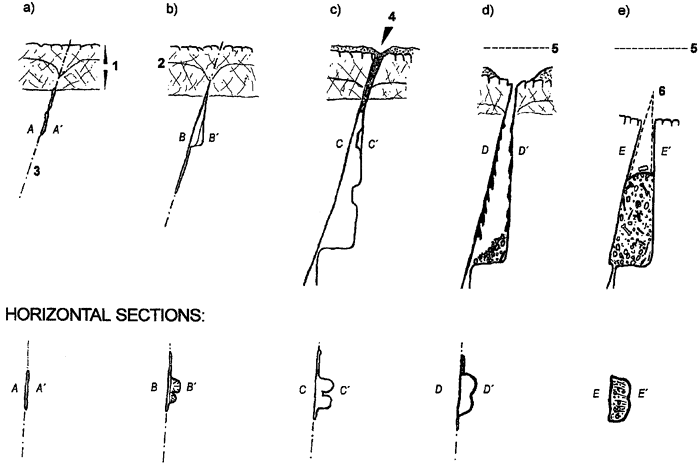
Fig. 4. Generalised sketch of the plateau shaft
development:
a = embryonic cavern stage; b, c = young shaft stage (drip-water
modelled); d =fully developed shaft; e = relict shaft. 1 = epikarst zone;
2 = perched aquifer level; 3 = tectonic rupture; 4 = incipient
depression; 5 = former surface; 6 = former lop of the relict shaft

Plate 7. Foot of the trough covered with modem organic detritus, soil and debris (the Hlinos shaft).

Plate 8. Cross-section of the lower part of a shaft in the Vcelare quarry: 1 = remnant of the shaft; 2 = embryonic cavern; 3 = drainage channels.
4. Notes on further shaft development (Figs 4c, d)
As they widen, parallel shafts and channels draw more perched water from the epikarst. Shaft deepening gradually diminishes as less water becomes available to any single opening. Sinter decoration begins, and these deposits tend to conceal the earlier dissolutional forms.
The diameter of an open shaft increases as the result of frost weathering (especially in late autumn and early spring), by rockfall, and by biological activity (e.g. by moss, lichens, and tree roots). Debris, including soil and organic detritus accumulate below the entrance and partly fill the shaft. Rotting organic material enhances the CO2 concentration in the cave air, especially near shaft floors. The high-CO2 atmosphere can increase drip-water aggressiveness and help deepen the shafts.
As the falling material accumulates in the shaft, and surface denudation reduces the terrain, only relict shafts eventually remain. These can be considered the equivalents of unroofed caves of Mihevc (1996), Gersl et al. (1999) or Sustersic (2000).
The relationship between shafts and dissolution dolines remains unexplained. Although there is great hydraulic conductivity beneath the dissolution dolines, surprisingly, no plateau shafts have been found in their floors. Also, no shafts were found below the centres of dissolution dolines in the Vcelare Quarry.
Conclusions
Shafts in the Dolny Vrch Plateau develop mostly along sub-vertical tectonic fractures, and predominantly at the base of the epikarstic zone. The corrosive and erosive effects of drip-waters are the most important factors in shaft deepening. Water-film action and rockfalls are less important. In addition to surface denudation, subsoil corrosion, and tree-root action, the water-film widening and condensation corrosion are responsible for the natural opening of shafts to the surface. Shaft development is strongly controlled by the high concentration of CO2 in their atmospheres.
Acknowledgements
I thank Gabriel Lesinsky, Rostislav Melichar, Vaclav Cilek and Pavel Bosak for helpful discussion of the problems and Arthur N Palmer for reviewing the English version of the text. The work could not have been done without help from friends in the Barrandien, Orcus, Badizer and Drienka caving clubs.
References
Baron I. 2001. Morphogenesis of the Garlika shaft in conditions of contact karst. Acta Carsologica 30(2), 175-180.
Baron I. 1998. Ke vzniku a vyvoji nekterych propasti v Jihoslovenskem krase. Speleoforum 17, 49-54.
Baron I. 2002. Speleogeneze propasti Dolneho vrchu. In: Vik et al. Dolny Vrch. ZO CSS Barrandien and SMOPaJ, Liptovsky Mikulas. 143 p.
Baron I. and Fiala J. 1999. Objev Drozdej priepasti na Pies ivecke planine (Slovensky kras). Speleoforum 18, 55-56.
Frumkin A. 1986. Speleogenesis of vertical shafts in a Mediterranean environment (Ofra, Israel). 9° Congreso Internacional de Espeleologia, Barcelona,. 264-267.
Gersl M., Stepisnik U. and Sustersic S. 1999. The unroofed cave near the bunker (Laski Ravnik). Acta Carsologica 28 (2, 3), 77-90.
Hradecky P., Hromas J., Starka V. and Vales Z. 1974. Propasti planiny Dolny vrch ve Slovenskem krasu. Ceskoslovensky kras 26, 53-88.
Klimchouk A. 1995. Karst morphogenesis in the epikarstic zone. Cave and Karst Science 21 (2), 45-50.
Klimchouk A., Sauro U. and Lazzaroto M. 1996. Hidden shafts at the epikarsric zone: a case study from the Sette Communi plateau, Venetian Pre-Alps, Italy. Cave and Karst Science 23 (3), 101-107.
Kosa A. 1971. Stages in the development of potholes on the Alsohegy plateau (Bodvaszilas, North Hungary). Karszt - es barlangkutatas VI, 69-78.
Lesinsky G. 1997. Depresia v krase - inspiracia pre nespokojny ch. Spravodaj SSS (4), 19-23. Liptovsky Mikulas.
Lesinsky G. 1998. Modelove stanovenie perspektivity dobre vyvinutych priepasti v Slovenskom krase. Spravodaj SSS 3, 34-48. Liptovsky Mikulas
Lesinsky G. 1999. Poznamky k jaskyniarceniu v zimnom obdobi s dorazom na pozorovanie v y duchov. Spravodaj SSS 4, 32-33. Liptovsky Mikulas
Lysenko V. et al. 1974. Dolny vrch - Vecsembukk. -Zaverecna zprava (MS), Krasova sekce svazu pro ochranu prirody a krajiny TIS, Praha.
Mello J. et al. 1996. Geologicka mapa Slovenskeho krasu. – Regionalne geologicke mapy Slovenska 1:50 000, Bratislava: Geologicka sluzba SR.
Mello J. et al. 1997. Vysvedivky ku geologickej mape Slovenskeho krasu 1:50 000. Bratislava: Vydavate'stvo Diony za Stura, 255 p.
Merrill G. K. 1960. Additional notes on vertical shafts in limestone caves. National Speleological Society Bulletin 22 (2), 101-108.
Mihevc A 1996. The cave Brezstropa jama near Povir (in Slovene, English abstract). Nase jame 38, 65-75.
Muller P. and Sarvary I. 1971. Pure corrosive model of the development of vertical karst shafts. Symposium on Karst Morphogenesis IGU, Budapest, Hungary, 1-12.
Skrivanek F. 1958. Vyzkum propasti severni casti Silicke planiny v Jihoslovenskem krasu. Ceskoslovensky Kras 11, 115-129.
Skrivanek F. 1965. Vyvoj krasu Plesivecke planiny v Jihoslovenskem krasu. Ceskoslovensky Kras 17, 42-58.
Sustersic F. 2000. The Role of Denuded Caves within the Karst Surface. Mitt. Verb. at. Hohlen- u. Karstforsch. 46 (l/2), 105-112.
Vik L. et al. 2002. Planina Dolny vrch. Liptovsky Mikulas: Slovenske muzeum ochrany prirody ajaskyniarstva, 143p.
Vik L. and Novotna J. 2000. Dolny vrch 2000 -Expedicni zprava (MS). ZO CSS 1-11, Praha Barrandien, 17p.
Williams P. W. 1983. The role of subcutaneous zone in karst hydrology. Journal of Hydrology 61, 45-67.